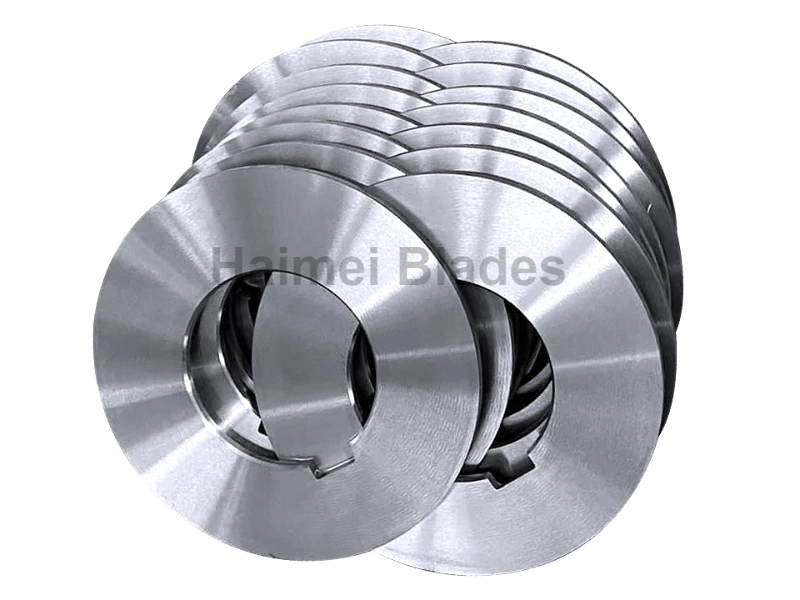In the realm of industrial manufacturing, the selection of the appropriate circular slitter blades holds paramount importance in achieving precision, efficiency, and longevity in cutting processes. Whether you're slicing through paper, plastic, metal, or textiles, the key factors to consider when choosing circular slitter blades remain consistent, albeit with nuanced variations to suit the unique properties of each material.
Let's embark on a journey to explore these crucial considerations, empowering you to make informed decisions and optimize your cutting operations for success.

Material Compatibility:
First and foremost, compatibility between the circular slitter blades and the material being cut is imperative. Different materials exhibit varying degrees of hardness, abrasiveness, and elasticity, necessitating tailored blade designs and materials to ensure optimal performance.
For instance, while high-speed steel (HSS) blades excel in cutting soft materials like paper and textiles, tungsten carbide blades are better suited for abrasive materials such as rubber and composites.
Blade Geometry:
The geometry of the circular slitter blades plays a pivotal role in determining the quality and precision of the cut. Factors such as blade diameter, thickness, and edge configuration must be carefully considered to accommodate the specific requirements of the material.
For thin, delicate materials like films and foils, blades with fine serrations or micro-serrated edges provide enhanced control and minimize the risk of tearing or distortion during cutting. Conversely, thicker materials may benefit from blades with larger diameters and robust edge profiles to ensure clean, consistent cuts without compromising efficiency.
Coating and Surface Treatment:
The application of specialized coatings and surface treatments can significantly enhance the performance and longevity of circular slitter blades, particularly when cutting challenging materials or operating under harsh conditions. Titanium nitride (TiN), titanium carbonitride (TiCN), and diamond-like carbon (DLC) coatings offer superior wear resistance and reduce friction, thereby extending blade life and minimizing the need for frequent sharpening or replacement.
Additionally, surface treatments such as cryogenic hardening or nitriding can further enhance the hardness and durability of the blades, ensuring sustained performance over prolonged use.

Cutting Speed and Feed Rate:
Optimizing the cutting speed and feed rate is essential to achieve efficient material processing while minimizing wear and tear on the circular slitter blades. The ideal cutting parameters vary depending on factors such as material type, thickness, and machine configuration.
For softer materials, higher cutting speeds and feed rates may be feasible, whereas harder or heat-sensitive materials may require slower, more controlled cutting to prevent overheating and premature blade dulling. Experimentation and adjustment of cutting parameters are often necessary to strike the right balance between productivity and blade longevity.
Machine Compatibility and Alignment:
In addition to selecting the appropriate circular slitter blades, ensuring proper machine compatibility and alignment is crucial for achieving optimal cutting performance. Blades must be installed securely and aligned accurately with respect to the material feed direction to prevent deflection, vibration, or uneven cutting.
Regular maintenance and inspection of the cutting equipment, including blade holders, spindles, and guide mechanisms, are essential to detect and rectify any issues that may compromise cutting quality and blade integrity.
Selecting the right circular slitter blades for industrial cutting applications involves a careful consideration of material compatibility, blade geometry, coating and surface treatment, cutting parameters, and machine alignment.
By understanding and addressing these key factors, manufacturers can optimize their cutting processes, enhance product quality, and maximize operational efficiency. With a diverse array of blade options and customization possibilities available, finding the perfect match for your specific material cutting needs is both achievable and rewarding.
